Chaya Suzuwa’s Gougumi Japanese Tea Evoking Sensory Experiences【Shizuoka City, Shizuoka Prefecture】
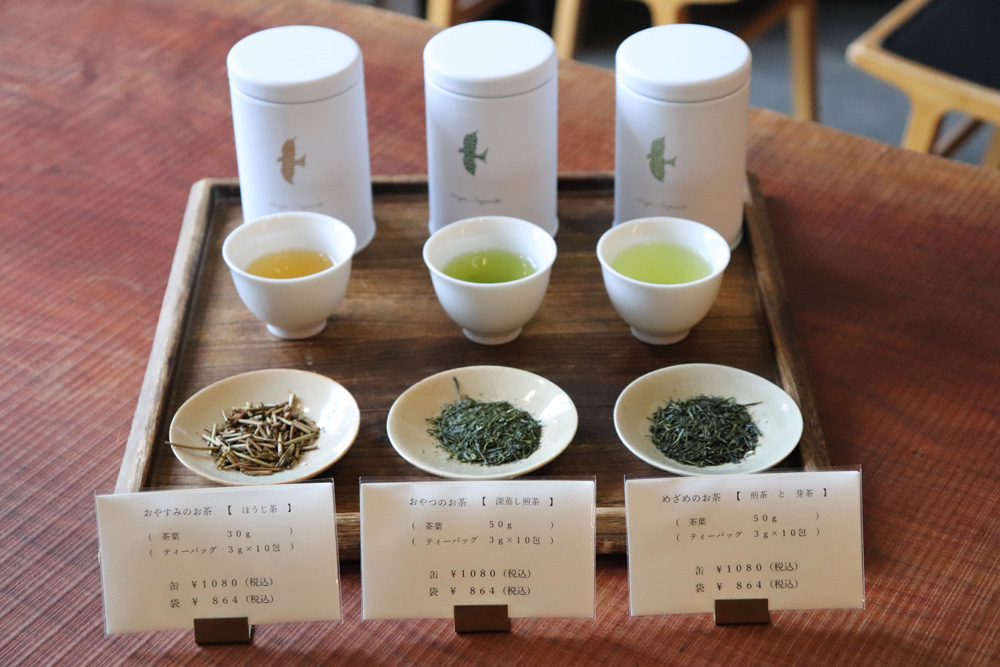
Shizuoka Prefecture is the largest producer of tea in Japan and a distribution centre for teas from all over Japan. The Shizuoka Tea Market is located in Chamachi, about 1.5 km northwest of Shizuoka Station. The Shizuoka Tea Market is bustling with activity during the shincha (new tea) season as multitudes of tea wholesalers are busy conducting transactions. We interviewed Suzuwa Shoten, a long-established tea wholesaler with advanced tea-making techniques with over 170 years of history and tradition located just a 10-minute walk from the Shizuoka Tea Market. Through its factory shop and social media platform, the company actively promotes green tea and is eager to introduce it to as many people as possible.
In this article, we will tell you what Chaya Suzuwa aims to be as a tea shop and how to enjoy tea to enrich your daily life, including an interview with Keisuke Atsumi, the sixth-generation owner of Suzuwa Shoten.
Contents
- 1 About Chaya Suzuwa
- 2 An Introduction to tea of Chaya Suzuwa
- 3 Interview: Chaya Suzuwa shares their vision of a new teahouse in changing times
- 3.1 Tea wholesalers’ gougumi techniques – the pride of Shizuoka’s Chamachi
- 3.2 Challenges in a Changing Era “What is the New Role Required of Tea Wholesalers?
- 3.3 Exploring new possibilities to enjoy tea and enrich our daily lives
- 3.4 If we can create delightful experiences through the aroma and taste of Japanese Tea…
- 4 Information of Chaya Suzuwa(Suzuwa Shoten)
About Chaya Suzuwa
Chaya Suzuwa is a retail tea shop established in 2019 next to Suzuwa Shoten’s tea factory. It is managed by Suzuwa Shoten, a tea wholesaler founded in 1848, who has been making tea for 170 years since the Edo period. The current representative is Keisuke Atsumi, the sixth generation.
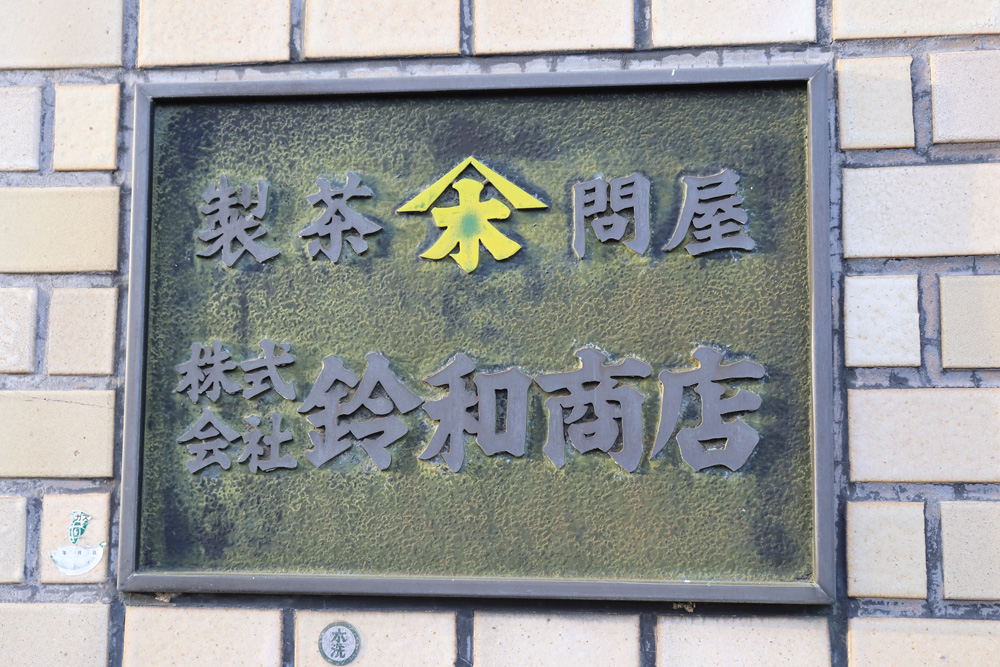
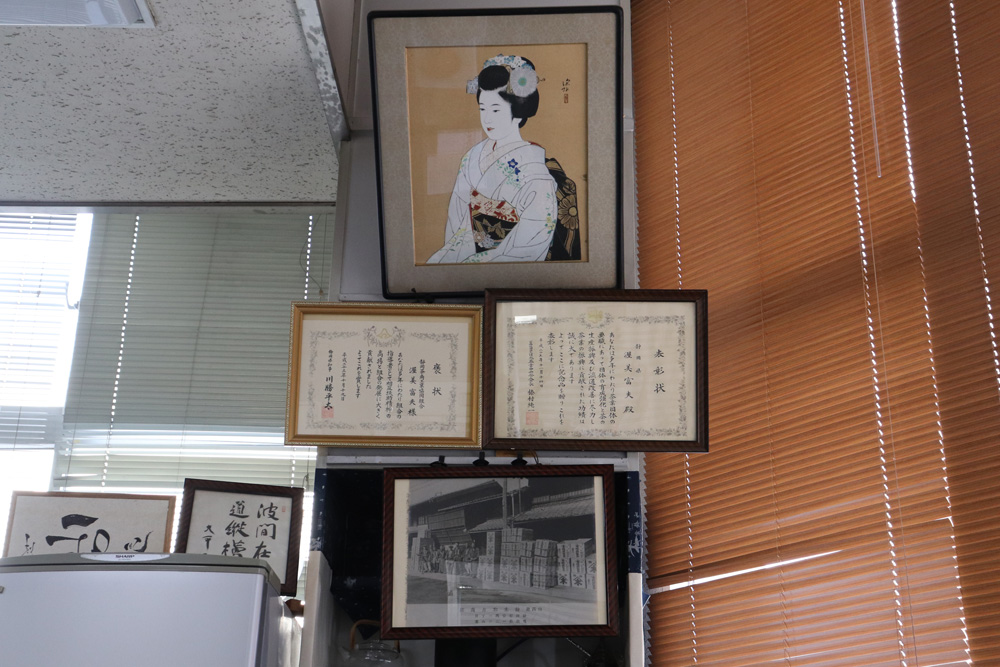 ▲Suzuwa Shoten, which manages Chaya Suzuwa, has received numerous awards for its advanced tea-making techniques.
▲Suzuwa Shoten, which manages Chaya Suzuwa, has received numerous awards for its advanced tea-making techniques.
For a long time, Suzuwa Shoten was engaged primarily in wholesale and not in retail. However, many customers would visit Suzuwa Shoten directly for their tea needs. For this reason, the company decided to set up a teastore in the area formerly used as a parking lot to provide a welcoming place for customers. Thus, “Chaya Suzuwa” was born.
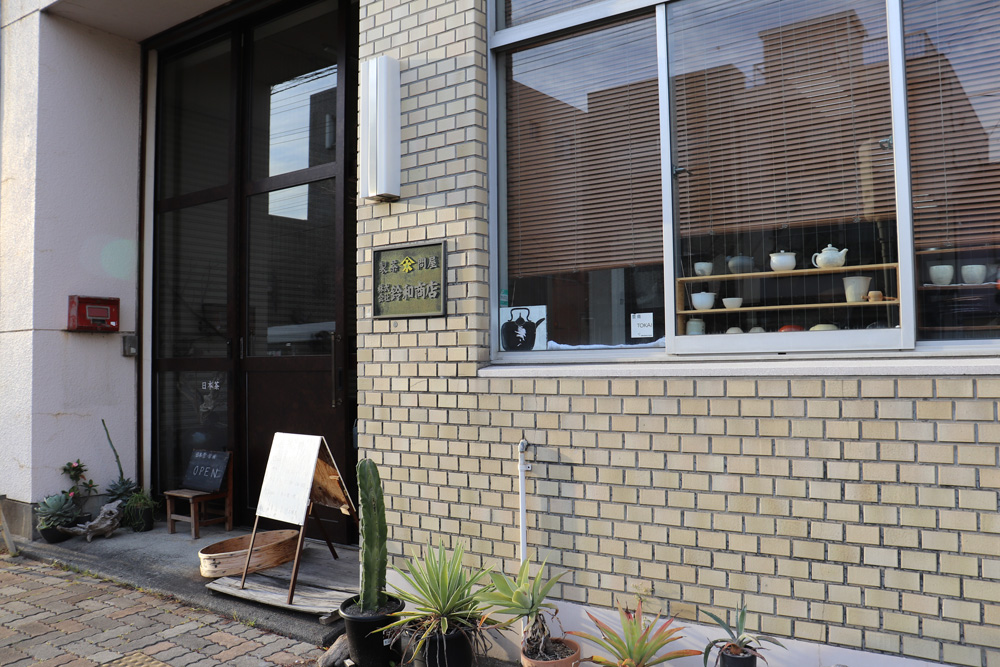
The interior of the store has a European folk atmosphere, and at first glance, it is hard to believe that it is a Japanese teastore. The shop displays Chaya Suzuwa’s original blends of teas and tea utensils carefully selected by Mr. Atsumi.
All of the tea utensils in Chaya Suzuwa are items that Mr. Atsumi himself has used and selected. He occasionally places special orders with artists he likes. Currently, more than 10 artists’ tea utensils are on display.
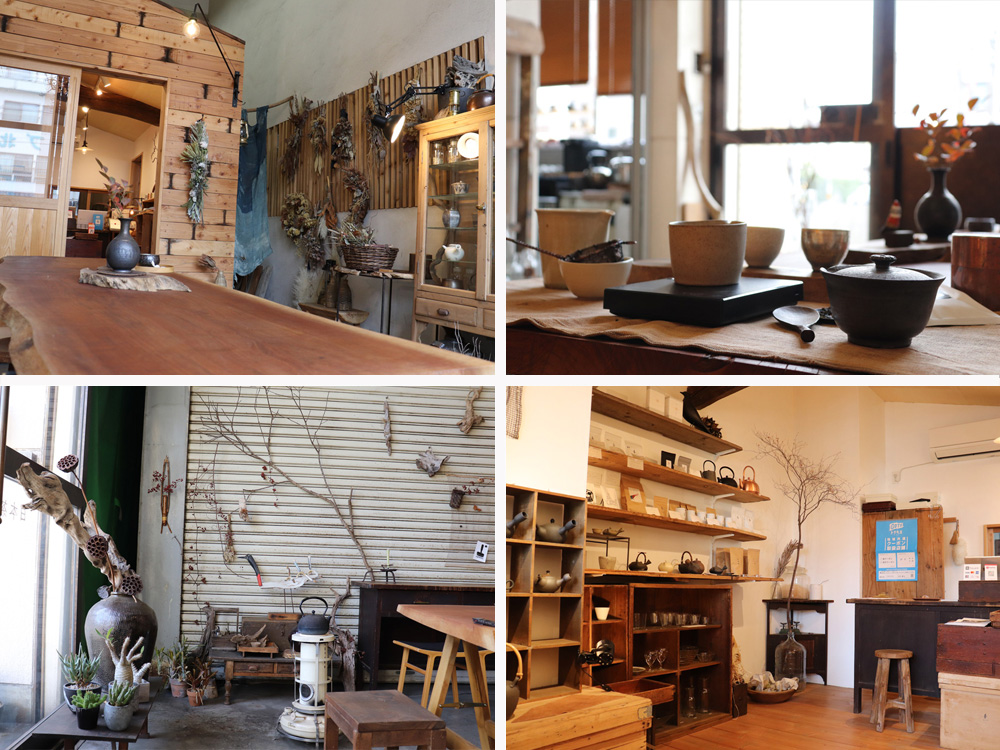
In one corner of the store, a shelf with quaint tea utensils is on display, lined with personal items that are the particular passion of Mr. Atsumi.
Whenever Mr. Atsumi goes to craft events or private exhibitions, he always ends up purchasing beautiful tea utensils that he encounters, and he displays some of them in the store as interior decoration.
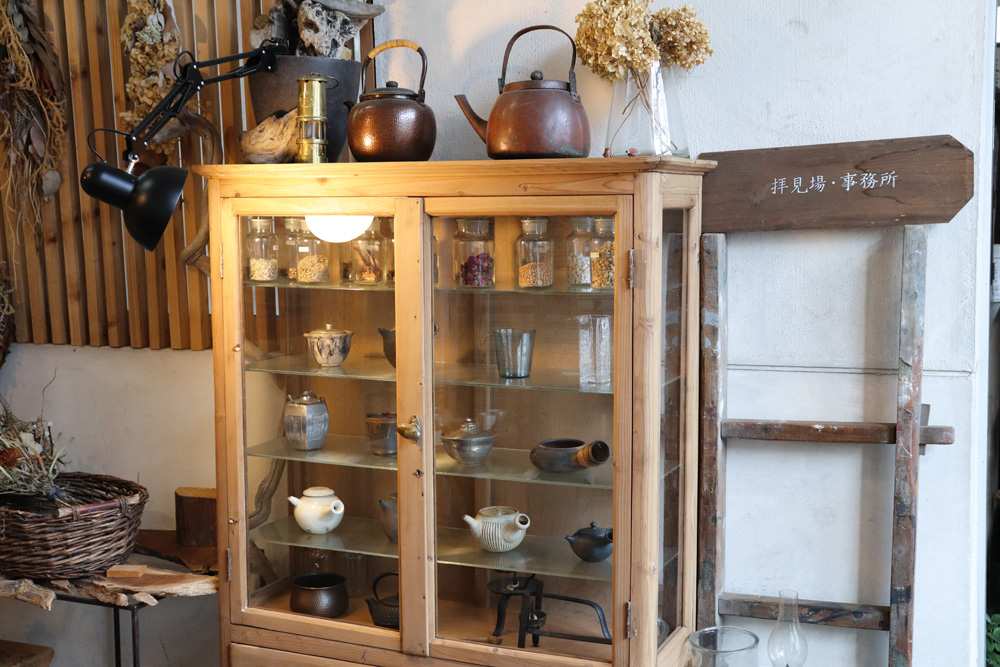 ▲Shelves displaying personal items of Mr. Atsumi (not for sale)
▲Shelves displaying personal items of Mr. Atsumi (not for sale)
An Introduction to tea of Chaya Suzuwa
At Chaya Suzuwa, we offer a variety of teas, from gougumi teas (gougumi is a traditional technique combining tea leaves from different regions to create a tea with a complex, three-dimensional aroma; also known as a blend) to single-origin teas of a single variety, and more.
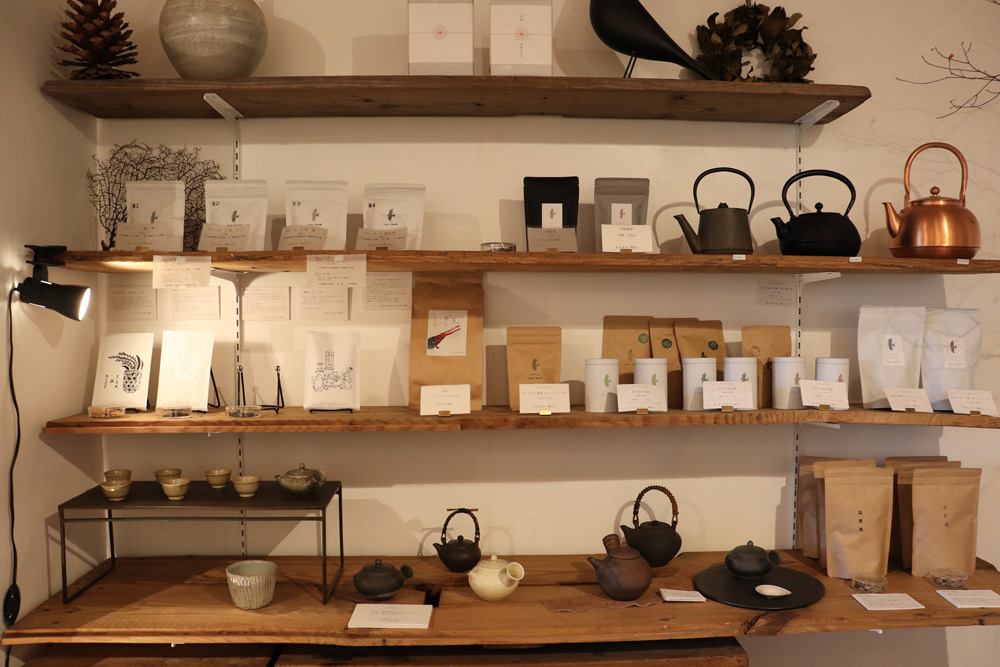
The original illustrated packaged teas are Chaya Suzuwa’s brand of teas created to promote the excellence of tea. In particular, the “Gift of Tea Time” series is based on Atsumi’s wish for people to enjoy the Sensory Experiences aspects of tea as well.
The concept is “tea that accompanies people’s daily life”. Why not add color to your daily life with a wonderful cup of carefully crafted gougumi tea? Here, we would like to introduce a few of Chaya Suzuwa’s teas.

(Itsumo no toki) The tea of awakening
This tea is perfect for the start of a perfect day. Made with the concept of “starting an important day in a fresh mood,” it is a combination of sencha from the Abe River basin in Shizuoka City, sencha from Tenryu with a fragrant and slightly astringent taste, and mecha.
Its fragrant and well-balanced taste is a refreshing way to start the day. Available in loose leaf and teabags.
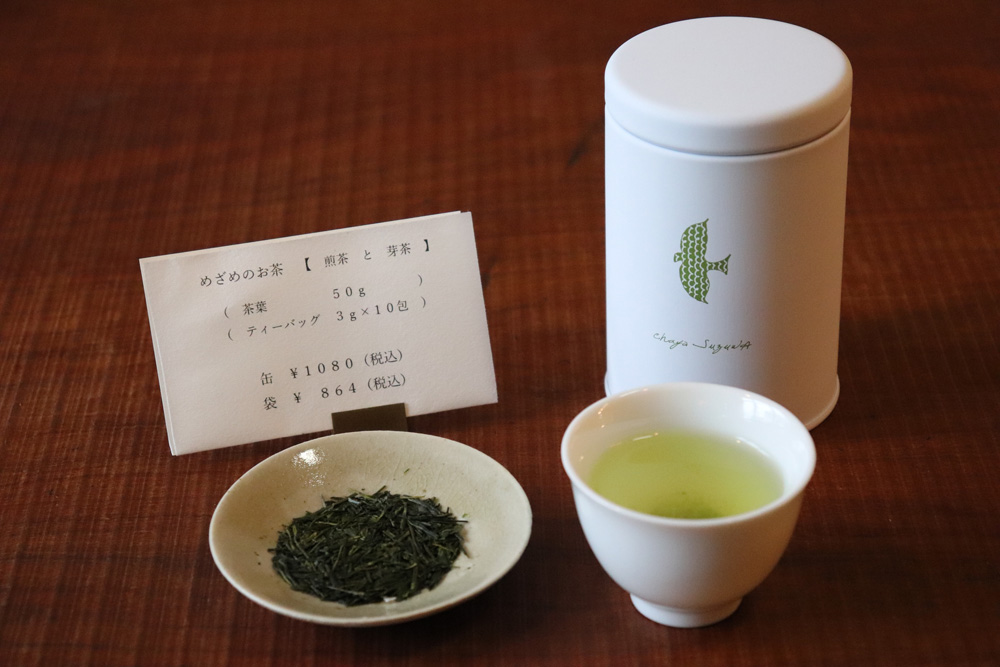
(Itsumo no toki) A tea for snack time
A cup of tea to make snack time more enjoyable and colorful. Made with the concept of “a refreshing time with your favorite snack,” this tea uses deep-steamed tea from Makinohara. Its beautiful dark green hue is soothing to the eye.
Its full-bodied, soft taste with minimal astringency is a perfect match for sweet snacks. Available in loose leaf and teabags.
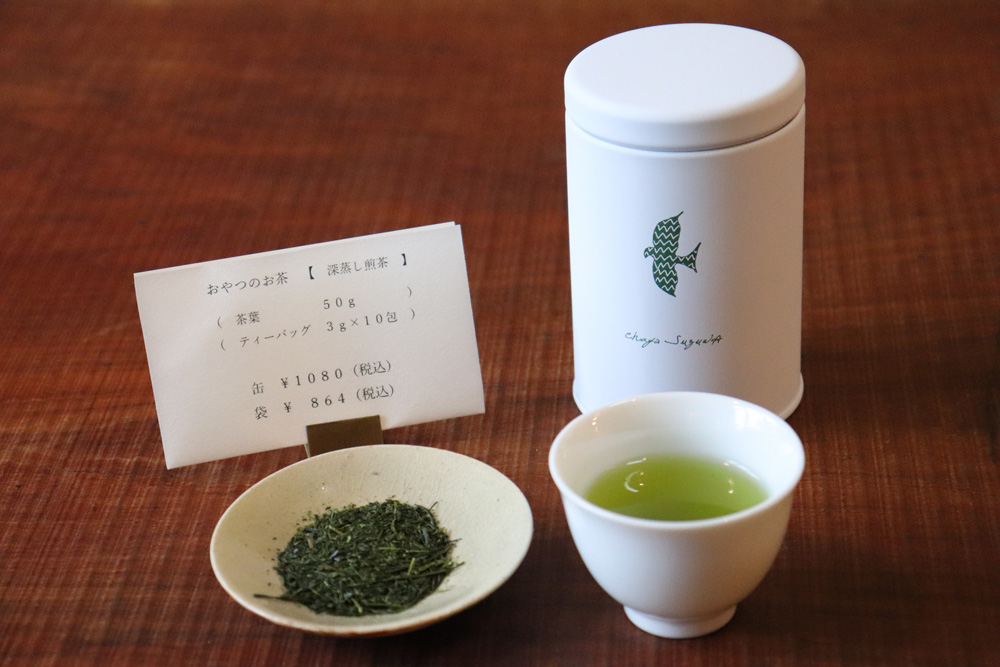
(Itsumo no toki) A tea for bedtime
A tea for bedtime is ideal for relaxing at the end of the day. This roasted tea made with kukicha from Makinohara and Tenryu was blended with the concept of “a relaxing time at the end of a hard day’s work.” Roasted tea, containing relaxing aromatic nutrients, is recommended before bed.
It has a mild and gentle aroma. Available in loose leaf and teabags.

Tsukihanamitsu – Yugao no Cha(Tea of Yugao )
To match the flavor and aroma of food, a native wild tea with a strong floral scent that is not typically present in regular green tea is utilized. The tea leaves are fermented after being roasted in the kama and then combined with a unique ratio of hakuyoucha (tea leaves that are 99.99% sun-shielded and contain many times more flavor components than regular sencha).
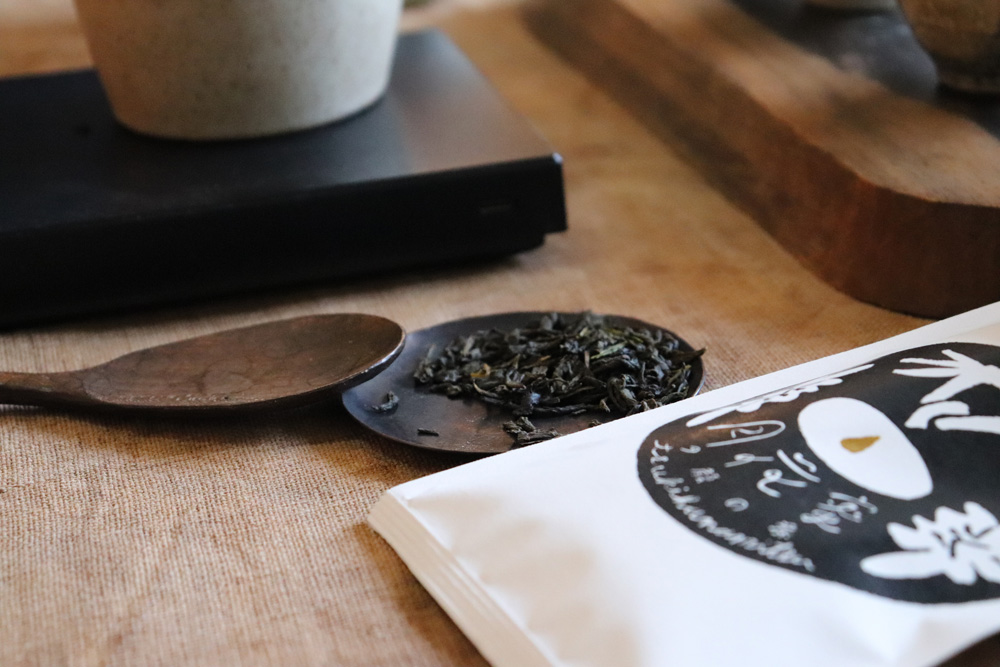
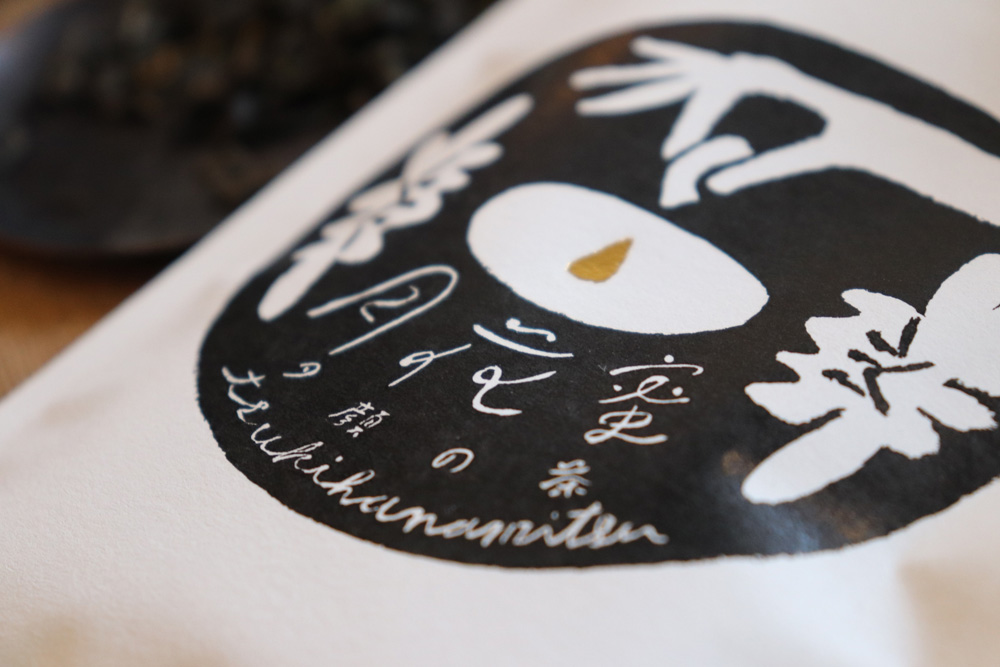 ▲Tsukihanamitsu – Yugao no Cha’s production was directed by chef Mr. Yugao and the package was designed by illustrator Yosuke Yamaguchi.
▲Tsukihanamitsu – Yugao no Cha’s production was directed by chef Mr. Yugao and the package was designed by illustrator Yosuke Yamaguchi.
The tea has a beautiful muscat-like aroma with a perfectly balanced sweetness of floral nectar. It is a unique combination of deep complexity and familiarity, created through collaboration with Chef Yugao.

Tea wholesalers’ gougumi techniques – the pride of Shizuoka’s Chamachi
–Please tell us about the tea production process at Chaya Suzuwa.
At Chaya Suzuwa, we are committed to the tea-making process of gougumi. Recently, single-origin teas have gained popularity, yet we believe that a tea wholesaler’s blending process creates a deeper aroma and flavor than single-origin teas.
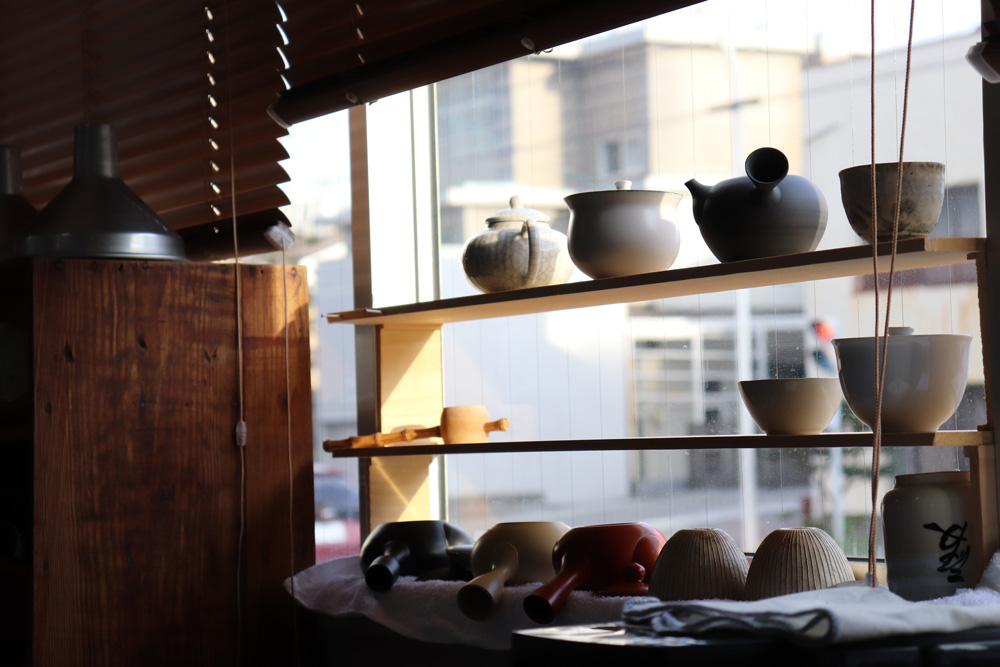
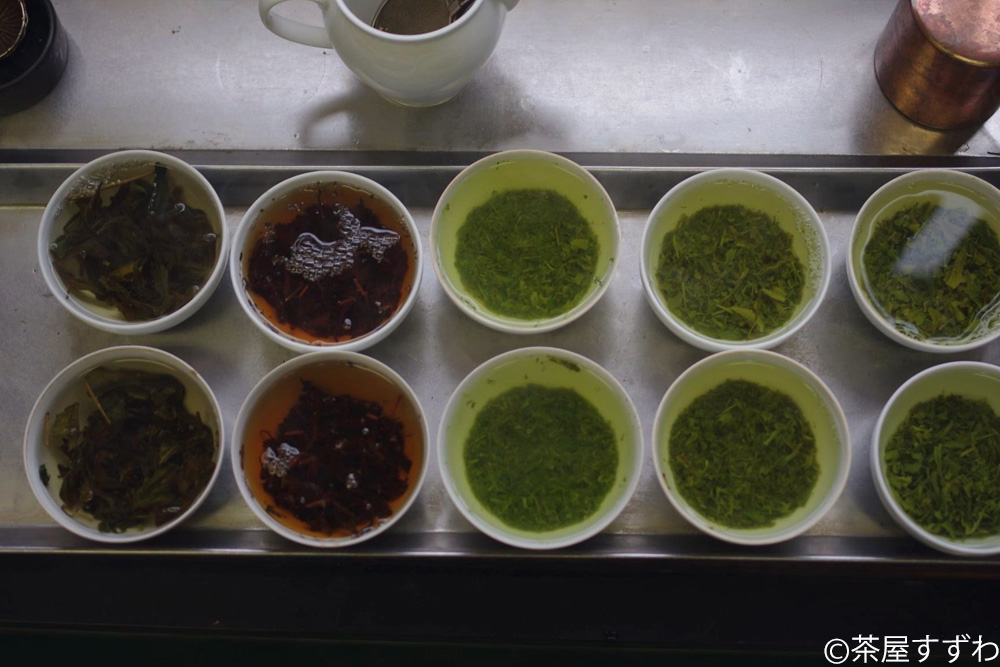 ▲Adjacent to the retail store is a tea viewing area. Here, dozens of different tea varieties are tasted day and night to determine the quality and produce their teas.
▲Adjacent to the retail store is a tea viewing area. Here, dozens of different tea varieties are tasted day and night to determine the quality and produce their teas.
–We are told that gougumi is the blending of tea leaves from different regions. Will you explain this technique in more detail?
For example, asamushicha(light steamed tea)produced in mountainous areas with short sunshine hours has a distinctive aroma and sweet taste, but the water color is light. On the other hand, Fukamushicha(deep steamed tea) produced in flatlands with long hours of sunlight tends to have a full-bodied flavor and a bright green water color, but its aroma tends to be weak. Simply put, blending is the art of combining these advantages.
It is a very important process in stabilizing the quality and quantity of tea leaves.
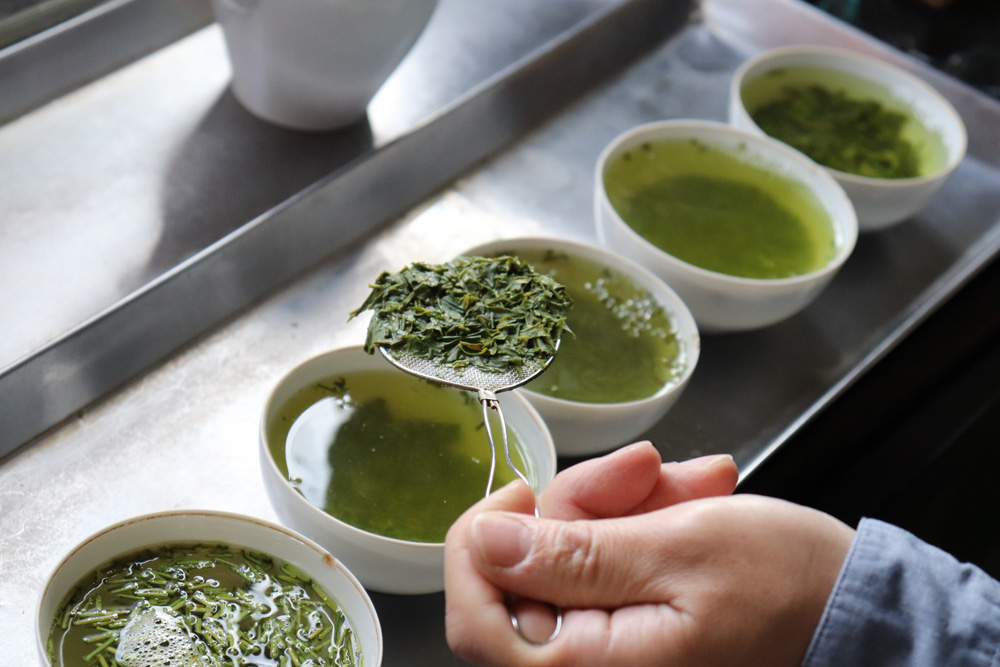
Tea that has been blended by a knowledgeable tea wholesaler is not simply a combination of the best parts of each tea. The process of determining the kind of tea produced in each region and maximizing its potential through roasting and finishing is truly a process of “reconstructing the taste and aroma of tea”.
As far as I know, Shizuoka’s tea wholesalers excel in the art of valuing and the art of tasting tea. That is one of the reasons why Shizuoka is called the town of Japanese tea.
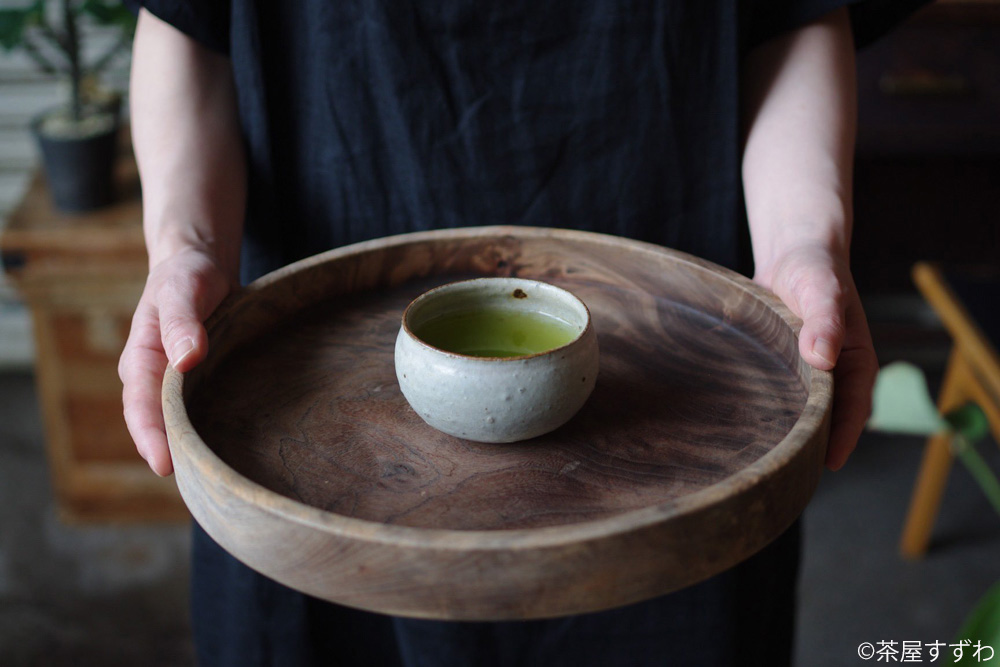
–Tea, being an agricultural crop, will never be the same every year. It makes sense that the skill to recognize the characteristics of the year’s tea determines the quality of the gougumi tea.
We will continue to hone our gougumi techniques and pursue the ultimate cup of tea. This journey is endless, even if it takes a lifetime.
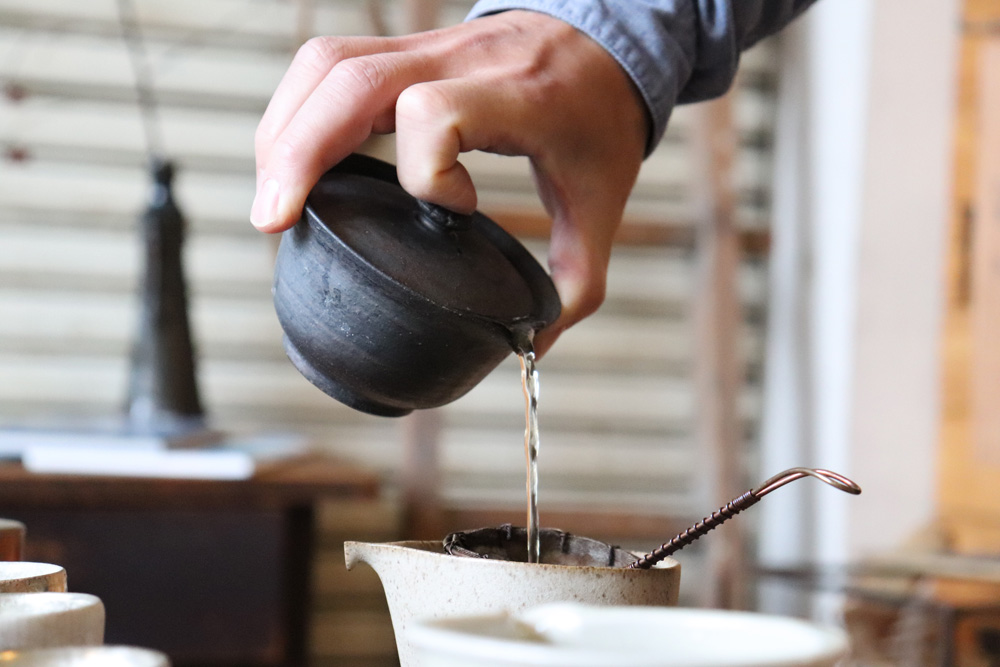
–So, your goal as a tea wholesaler is “to make the ultimate tea with your gougumi techniques”.
Yes, however, I want you to understand that I don’t want to insist on which tea is the best or the worst. Everyone’s sense of taste is different, and that is not something to compete with. I think that it is for the customers to judge for themselves.
However, we love it as tea makers when people genuinely say that the tea we have created is “delicious” (laughs).
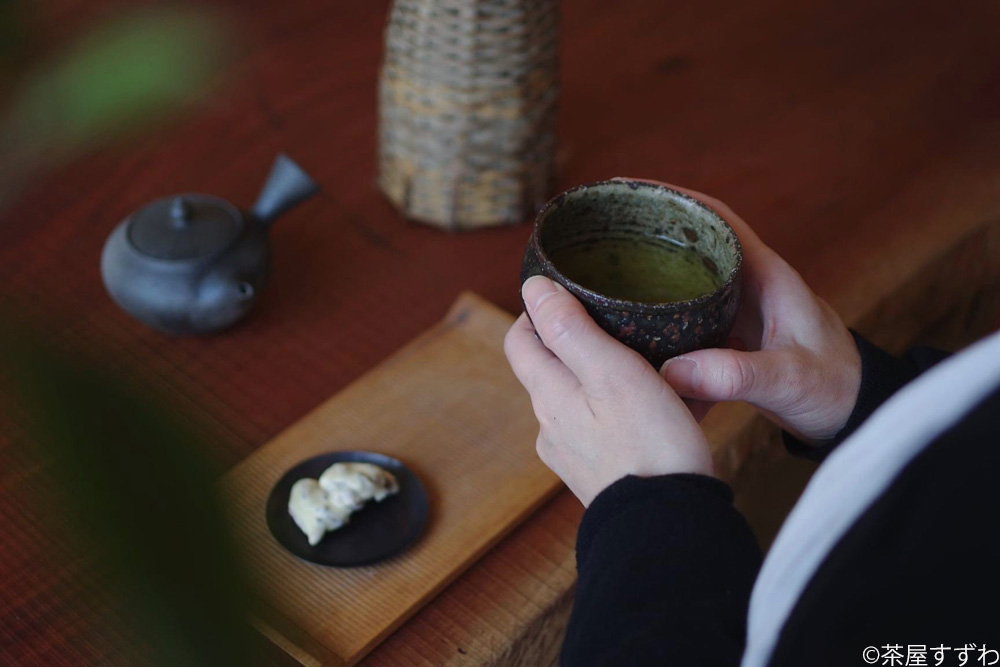
Challenges in a Changing Era “What is the New Role Required of Tea Wholesalers?
Traditionally, Japanese tea was mainly blended by tea wholesalers. Recently, however, we feel that the image of blended tea is not so good. Single-origin teas are gaining popularity and the distribution of tea through online stores is expanding.
Under these circumstances, we continually ask ourselves what our role as a tea wholesaler is.
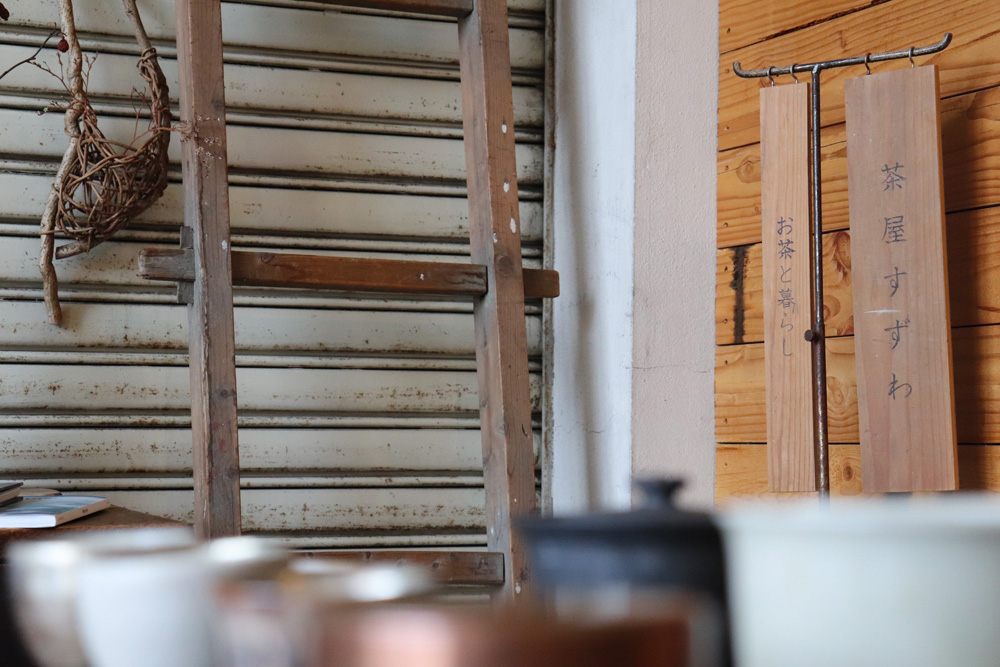
To tell the truth, it is much easier to purchase tea from a single production area and sell a single variety of tea from a single production area. However, the true value of a tea wholesaler lies in the traditional gougumi technique. That will never waver.
–The distribution of tea has evolved greatly over the years, but there is a big difference between just distributing tea and distributing tea that has passed the “strict connoisseurship” of tea wholesalers. However, it may be difficult to communicate that part to consumers.
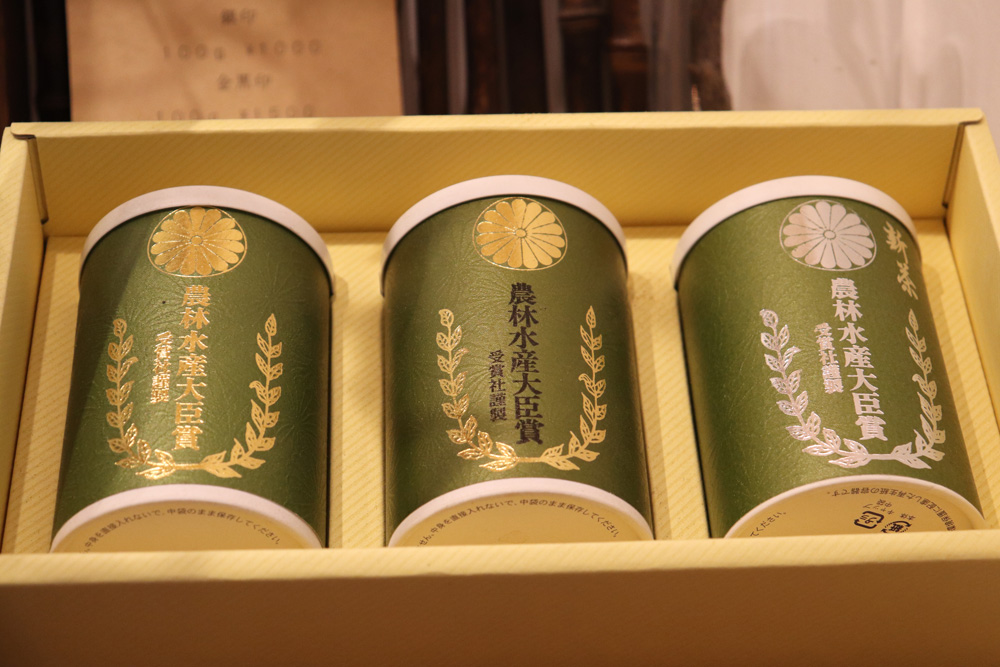
Shizuoka is not only a tea production area, but also a gathering place for tea from all over Japan. Therefore, we have many opportunities to come in contact with tea and naturally develop an eye for tea quality. This sense is the very essence of our craft.
We wonder if we can communicate this part of our business better. I believe that when consumers can see this, a new value and role for us as tea wholesalers will emerge.
–So, you intend to leverage your expertise in tasting and evaluation to promote the attraction of tea?
Shizuoka tea is often lumped together as “Shizuoka tea,” but there are many different tea-producing regions in Shizuoka Prefecture, each with distinct growing conditions. I feel that it is the role of tea wholesalers to communicate these differences.
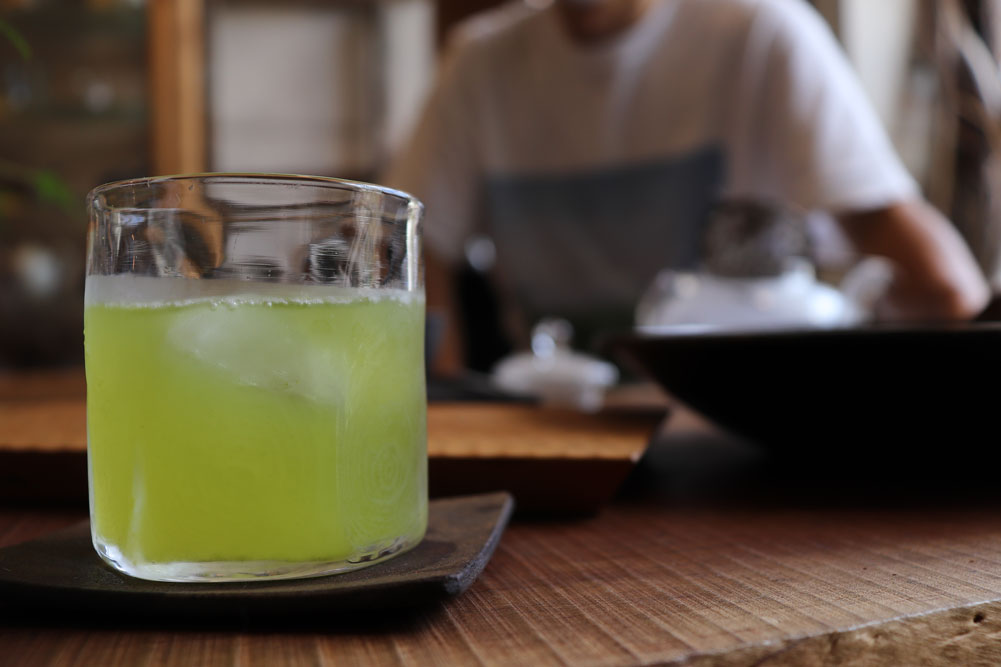
Exploring new possibilities to enjoy tea and enrich our daily lives
Tea consumption has declined as of late. However, I believe this is due to a lack of effective marketing, not taste. To emphasize the appeal of tea, it is important to focus on the unique moments and sensory experiences that only tea can provide, including its aroma and taste.
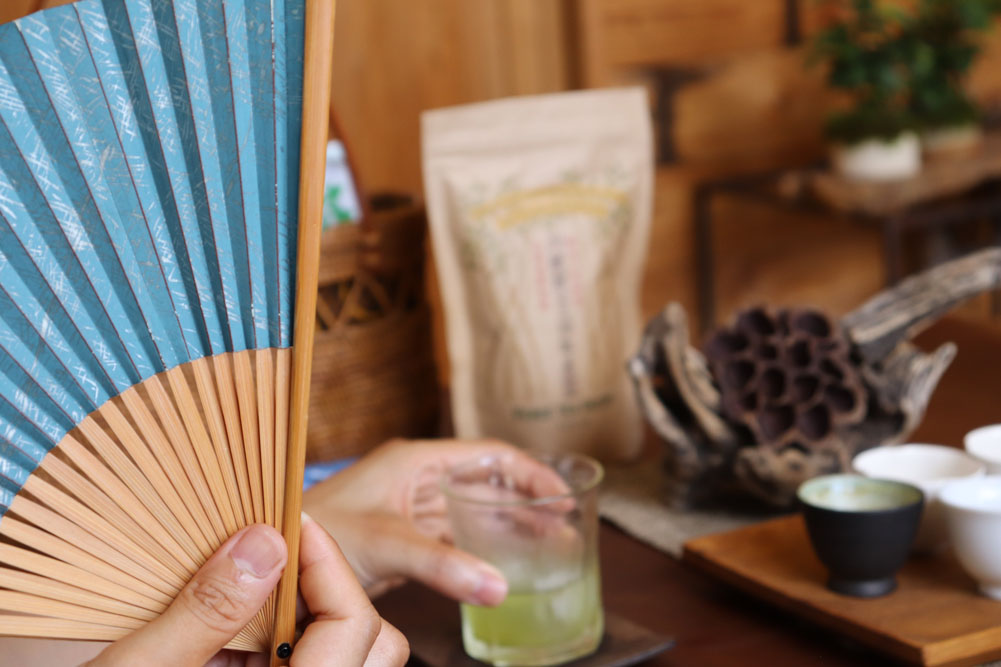
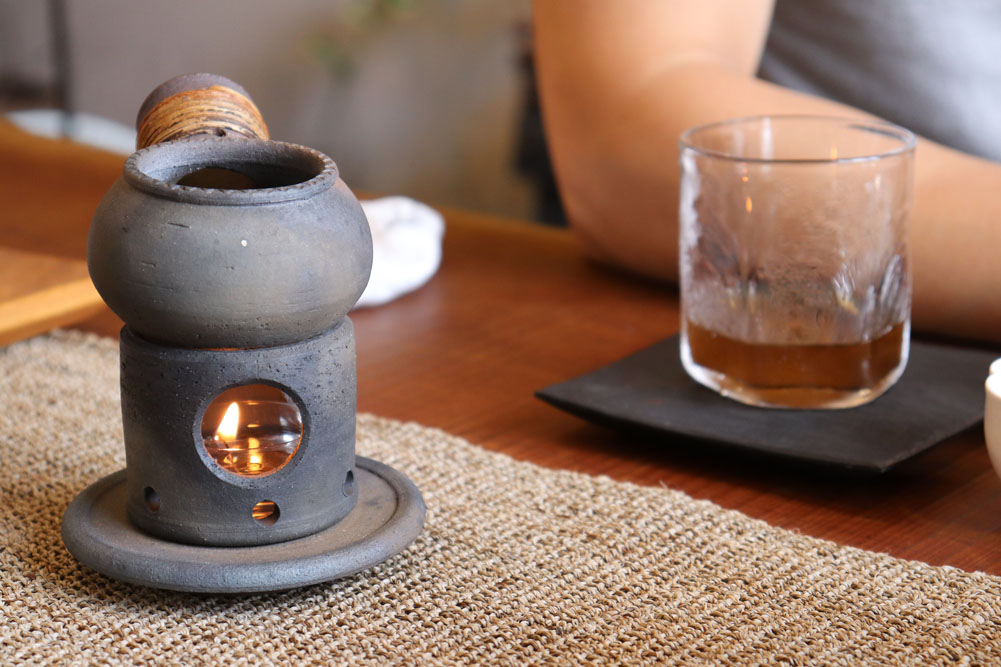
–What do you mean by “the unique moments and sensory experience that only tea can provide”?
I have a unique idea of creating teas that not only satisfy the taste buds but also evoke a particular scene or mood when consumed. While I agree that it is important to mention the name of the production area or variety on the tea packaging, I doubt if people who are not passionate about tea will be able to understand its appeal simply by knowing the name of the production area or variety.
For this reason, Chaya Suzuwa has devised a creative approach to naming and designing its teas. The package features a small bird logo which symbolizes taking flight towards a new future. It also represents our hope that the tea will be used to celebrate special occasions and that the Chaya Suzuwa is like a perch where a bird in flight rests its wings.
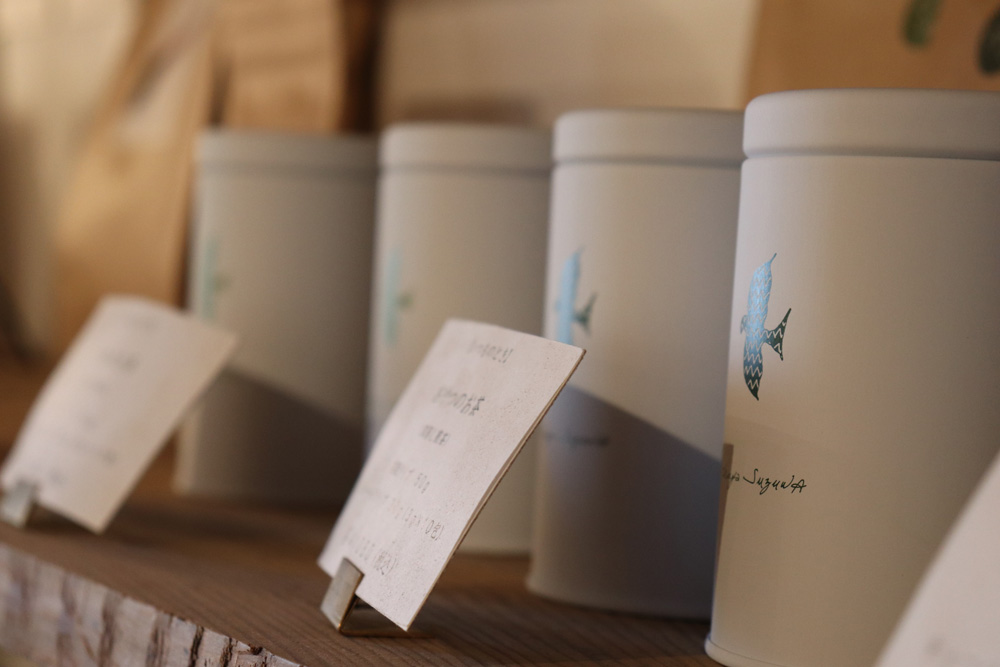
Now, our products are available at select stores and general merchandise stores. We feel that this has allowed us to reach individuals who have never had the chance to experience it before.
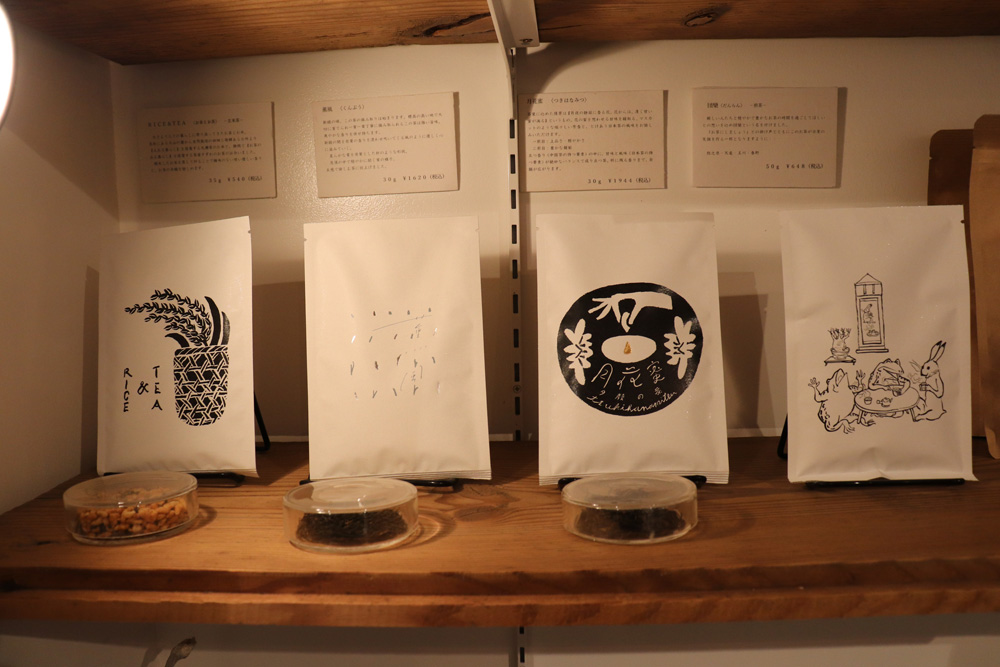
–So, you have felt the benefits of showing tea in a new light. Are you also using social media to promote tea in new areas?
Yes, we are actively using social media as an easy way to communicate the appeal of tea to other industries. I enjoy taking photographs of tea. Therefore, it makes sense to utilize this passion.
–I’ve had the pleasure of viewing some of your photographs. I love your tea photo captured in the form of fireworks.
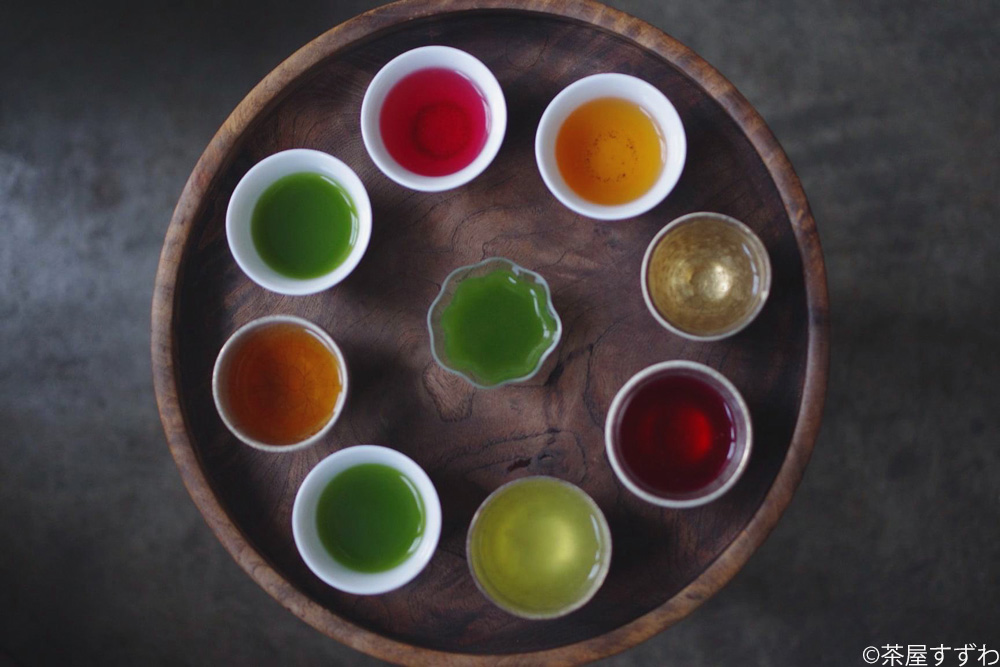 ▲Photographs of tea on Chaya Suzuwa’s social media sites
▲Photographs of tea on Chaya Suzuwa’s social media sites
Japanese Tea is often associated with the color green, but in reality, there are various colors of tea depending on the type. To showcase this, we have taken photos that allow people to visually appreciate the different hues of tea.
–Interestingly, tea is perhaps the only drink that has such a wide range of colors without the need for artificial additives.
We make green tea as well as black tea and fermented tea. Tea is a very diverse drink, yet this is not widely known. Many people ask, “Do they make black tea in Japan?” Or, “Can you make oolong tea in Japan? Many people are surprised to learn that tea is made in Japan.
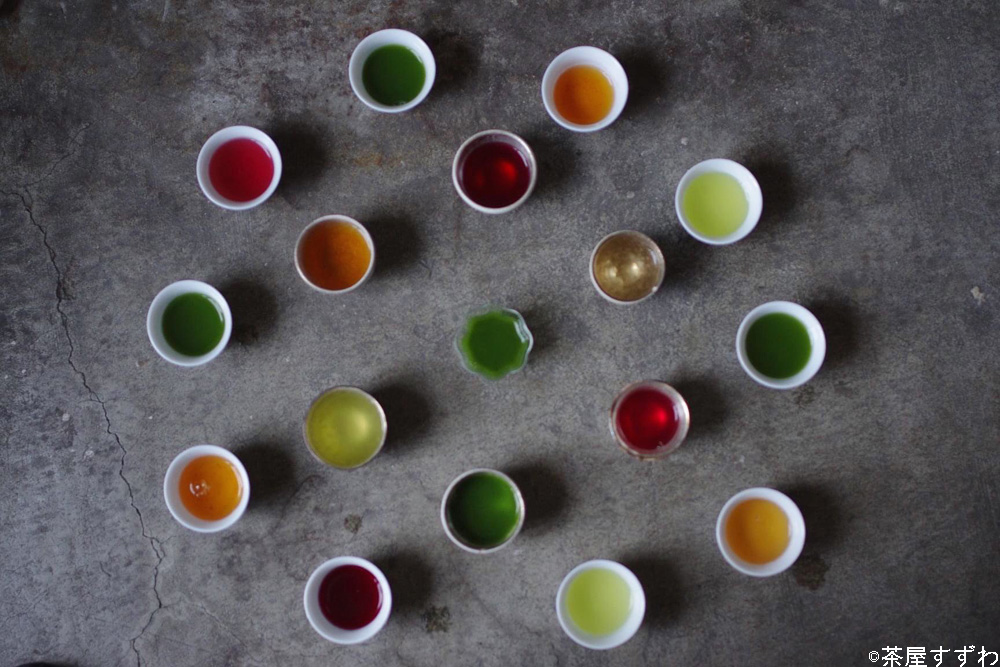
If we can create delightful experiences through the aroma and taste of Japanese Tea…
–I see that you value showcasing the diversity of tea and the picturesque ways to enjoy it.
I think that people should be free to enjoy tea in any way they want. I don’t intend to impose a particular method, and I think it’s the worst thing to be judgmental about that.
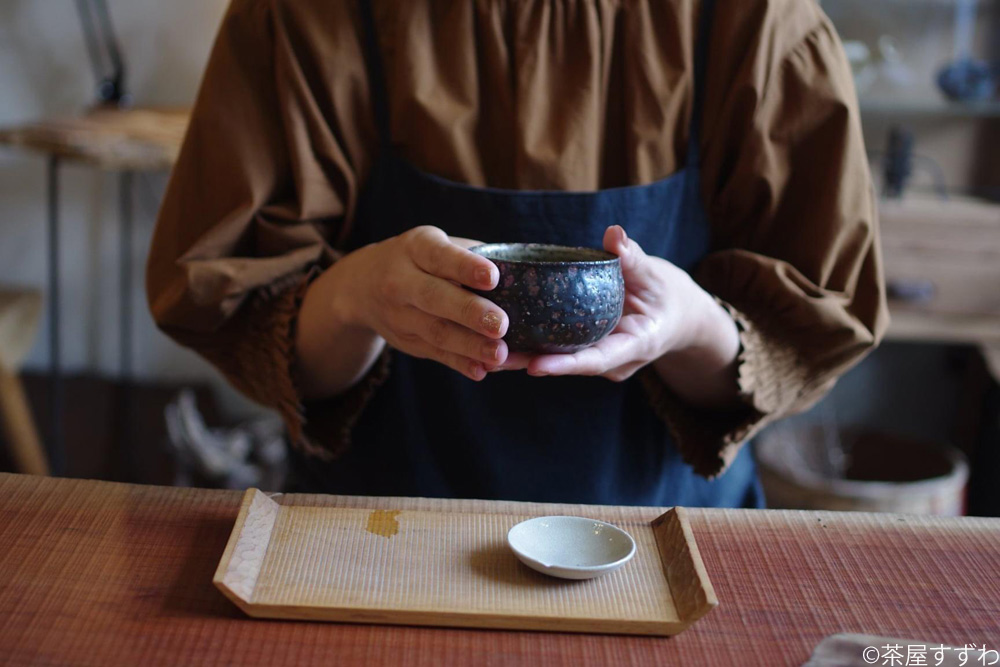
I am sure that external factors such as who you drink tea with, what kind of teapot you use, and the atmosphere you enjoy tea in, have a lot to do with the taste. Tea brewed by a grandmother on the porch tastes better than tea with someone you don’t like.
Even a cup of instant noodles tastes better when you eat it at the top of Mt. Fuji. If we can showcase this picturesque aspect of tea, I think people will enjoy it even more.
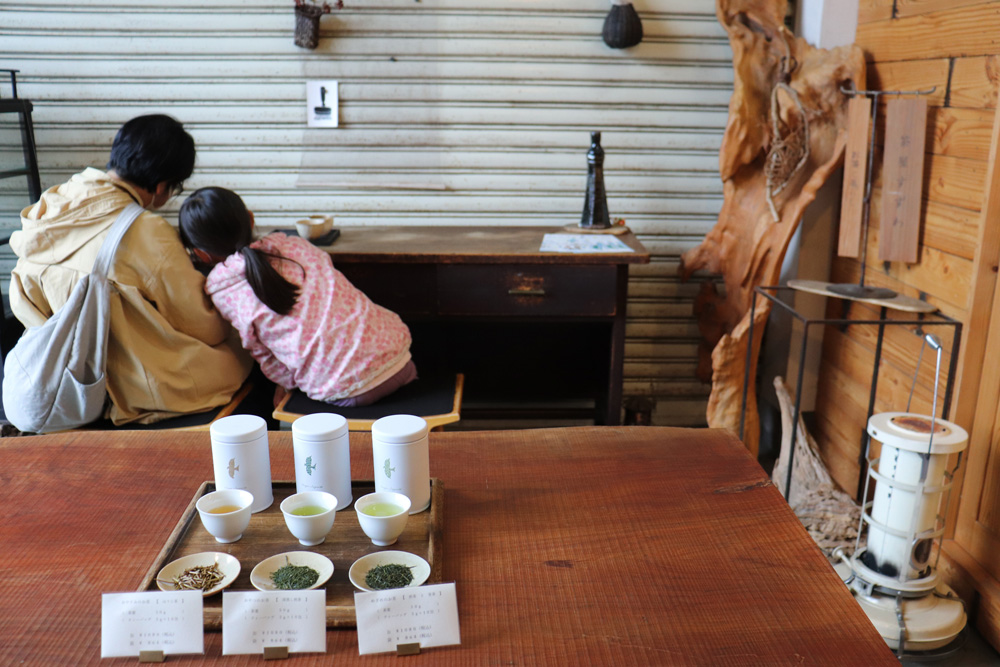
Recommended articles : Shizuchika Tea Shop Issa : Entrusted with the Passion of Shizuoka City’s tea producers【Shizuoka City, Shizuoka Prefecture】
Recommended articles : Chamachi KINZABURO’s Mission to Design Tranquil Tea Spaces【Shizuoka City, Shizuoka Prefecture】
Information of Chaya Suzuwa(Suzuwa Shoten)
| Address | 3-68 Anzai, Aoi-ku, Shizuoka City, Shizuoka Prefecture, 420-0011, Japan |
| Website | https://www.chaya-suzuwa.jp/ |
| Phone number | +81 54-271-1238 |
| E-money and credit cards | Available |
| Open | Weekdays 10:00 a.m. – 4:30 p.m.
2nd.4th Saturdays 11:00 a.m. – 6:00 p.m. |
| Closed | Thursday, Saturday, Sunday, Holidays |
| Parking lot | A few parking spaces are available |
| Access | 15 minutes drive from JR Shizuoka Station |
| Writer | Norikazu Iwamoto |
| Career | Ochatimes chief editer. Meeting with Vice Governor of Shizuoka prefecture. Judge of Shizuoka 100 tea’s award in 2021~23. Ocha Times link introduced at website of World O-CHA(Tea) Festival 2022, Tea Science Center, The City of Green Tea Shizuoka, Ministry of Agriculture, Forestry and Fisheries. |
| English translator | Calfo Joshua |
| Career | Born and raised in England, living in Japan since 2016. Studying arboriculture in Shizuoka Prefecture whilst operating his landscape business Calfo Forestry. Appreciating the nature of Japan and the culture that places such importance in it. |


 Go to Japanese page
Go to Japanese page
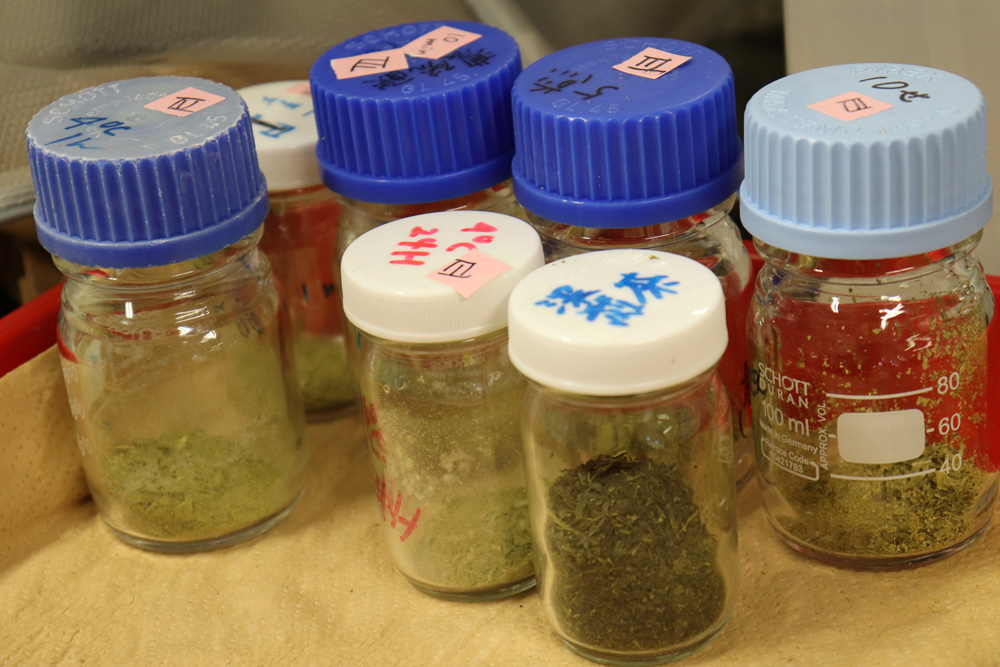
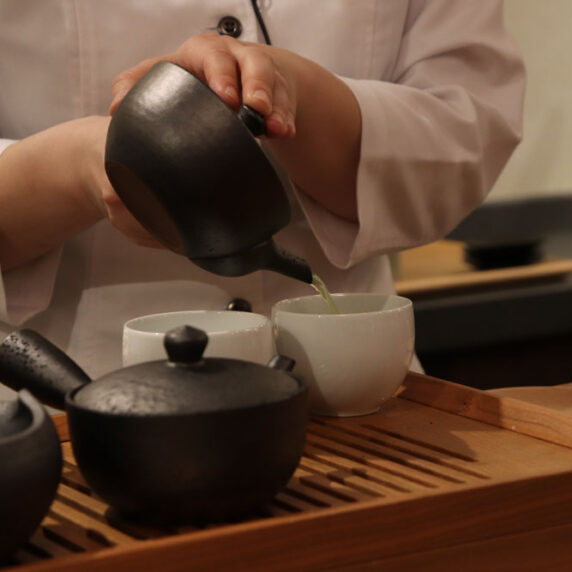
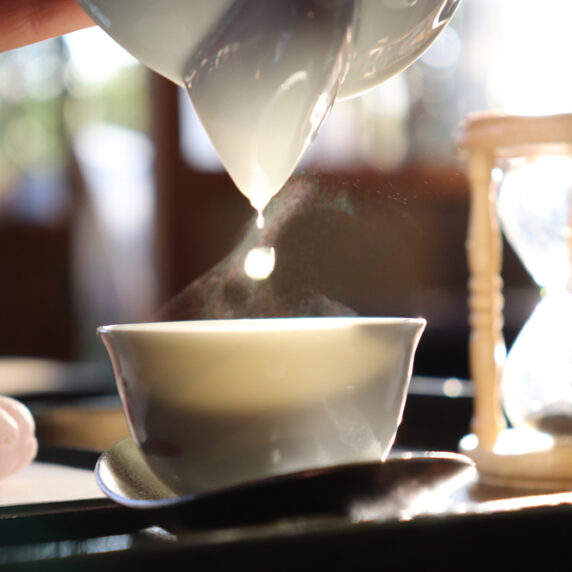
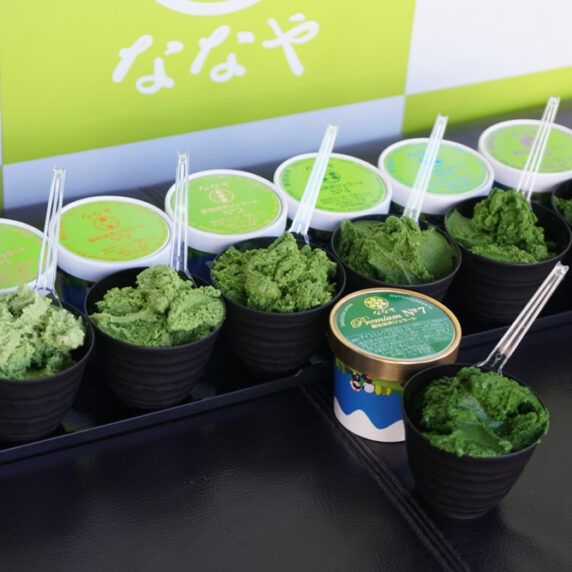
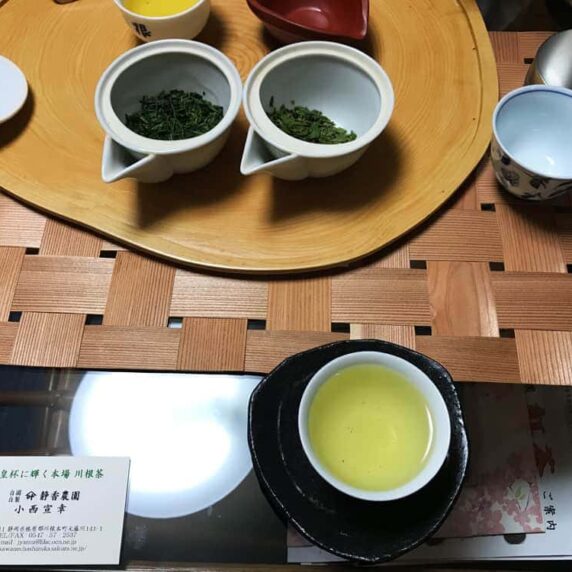
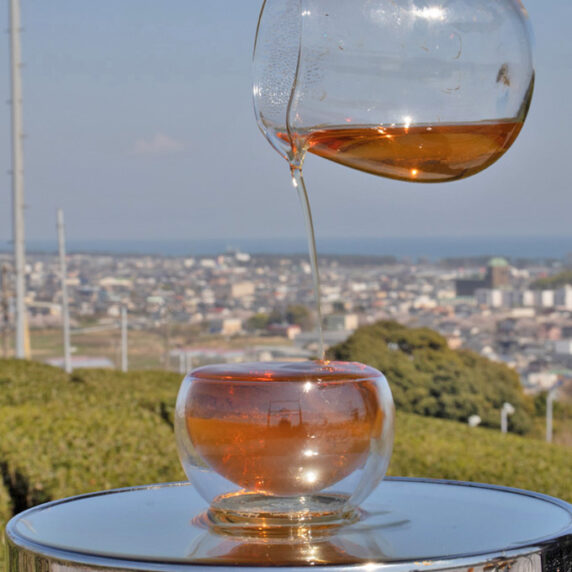




 on the red bar to close the slide.
on the red bar to close the slide. to see the distance between the current location to the Chaya.
to see the distance between the current location to the Chaya.